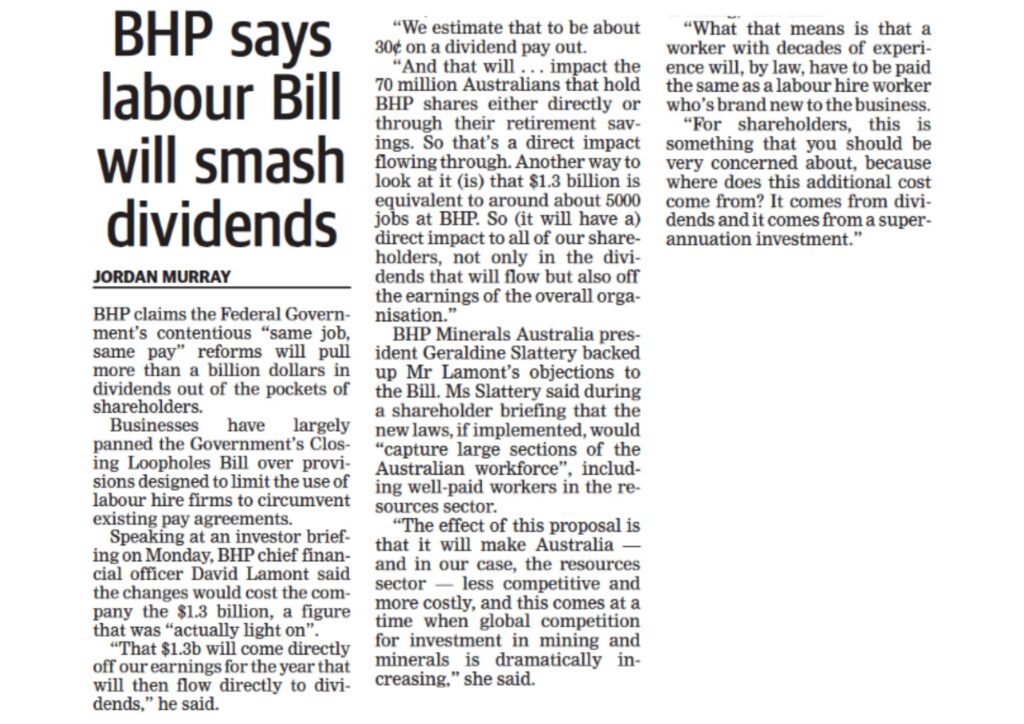

Article by Jordan Murray courtesy of the West Australian.

BHP claims the Federal Government’s contentious “same job, same pay” reforms will pull more than a billion dollars in dividends out of the pockets of shareholders.
Businesses have largely panned the Government’s Closing Loopholes Bill over provisions designed to limit the use of labour hire firms to circumvent existing pay agreements.
Speaking at an investor briefing on Monday, BHP chief financial officer David Lamont said the changes would cost the company the $1.3 billion, a figure that was “actually light on”.
“That $1.3b will come directly off our earnings for the year that will then flow directly to dividends,” he said.
“We estimate that to be about 30¢ on a dividend pay out.
“And that will . . . impact the 70 million Australians that hold BHP shares either directly or through their retirement savings. So that’s a direct impact flowing through. Another way to look at it (is) that $1.3 billion is equivalent to around about 5000 jobs at BHP. So (it will have a) direct impact to all of our shareholders, not only in the dividends that will flow but also off the earnings of the overall organisation.”
BHP Minerals Australia president Geraldine Slattery backed up Mr Lamont’s objections to the Bill. Ms Slattery said during a shareholder briefing that the new laws, if implemented, would “capture large sections of the Australian workforce”, including well-paid workers in the resources sector.
“The effect of this proposal is that it will make Australia — and in our case, the resources sector — less competitive and more costly, and this comes at a time when global competition for investment in mining and minerals is dramatically increasing,” she said.
“What that means is that a worker with decades of experience will, by law, have to be paid the same as a labour hire worker who’s brand new to the business.
“For shareholders, this is something that you should be very concerned about, because where does this additional cost come from? It comes from dividends and it comes from a superannuation investment.